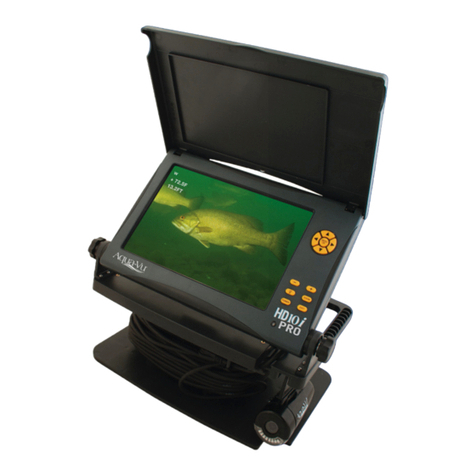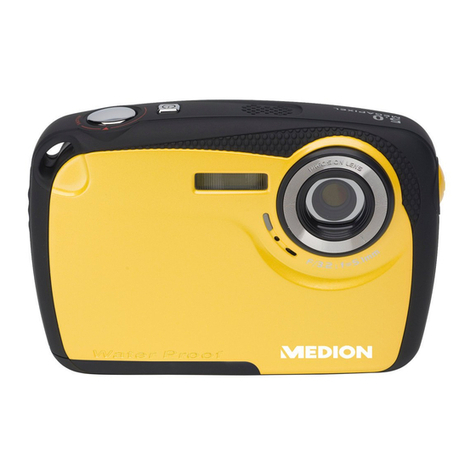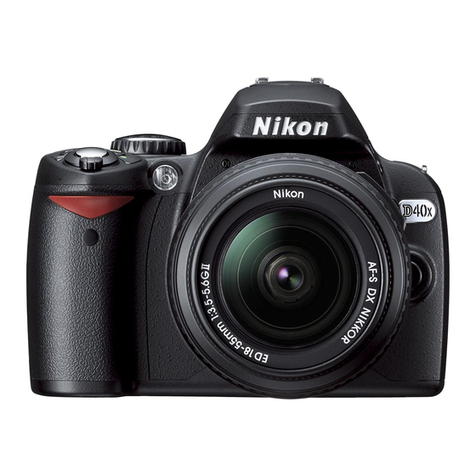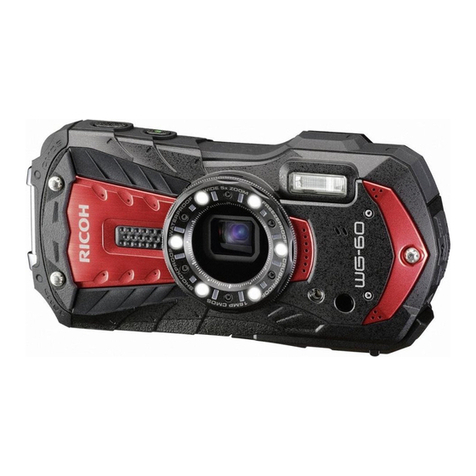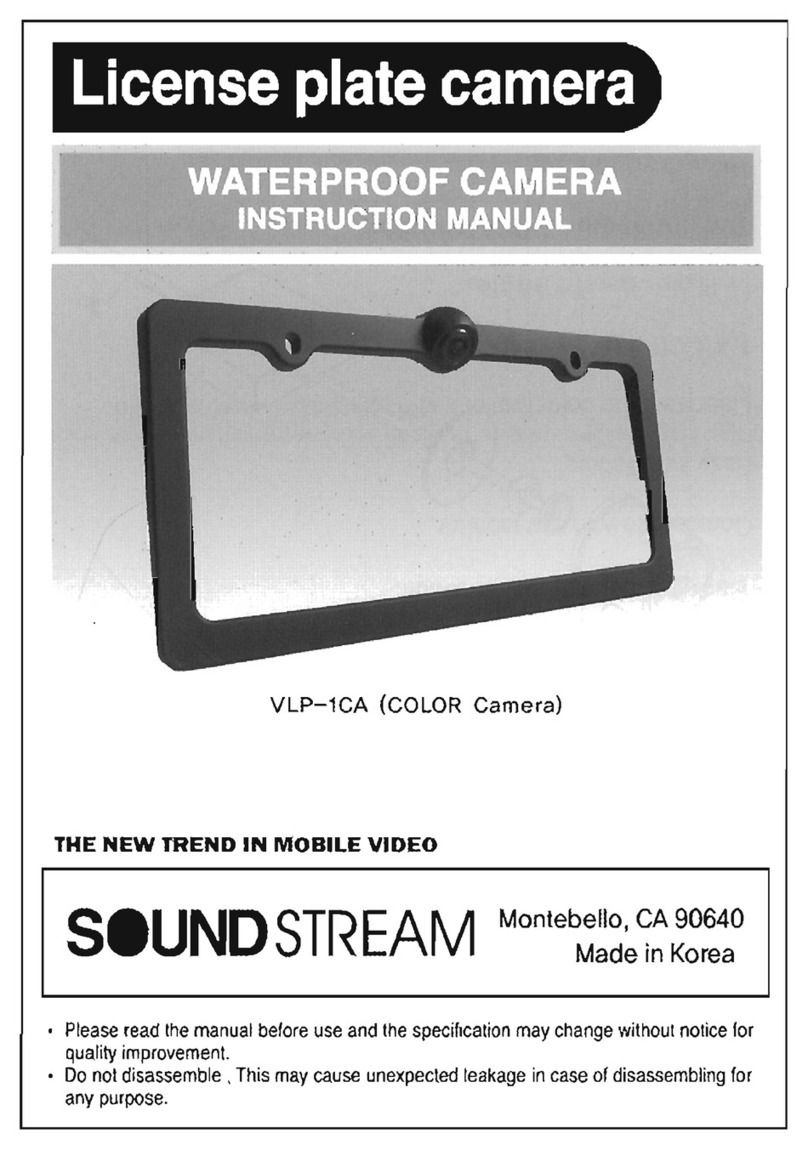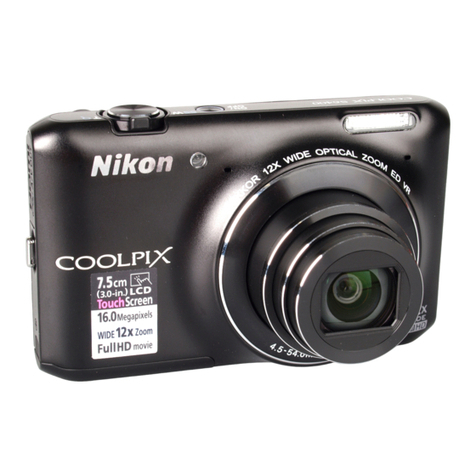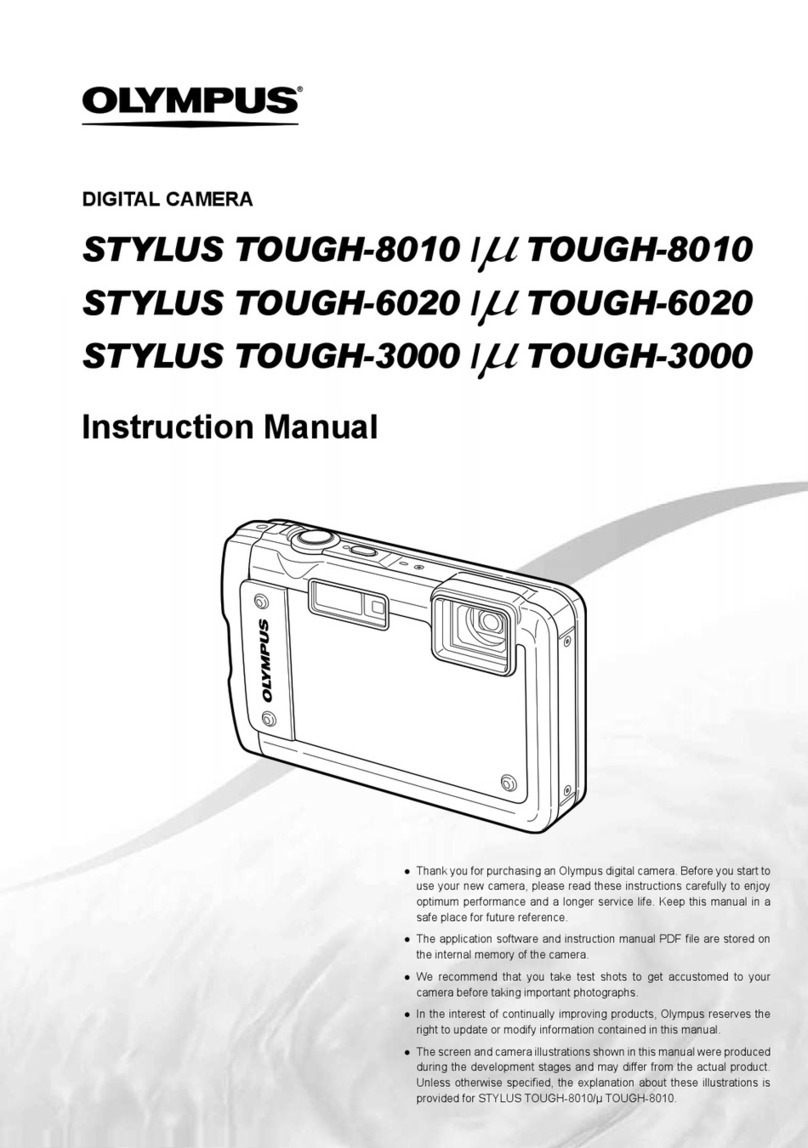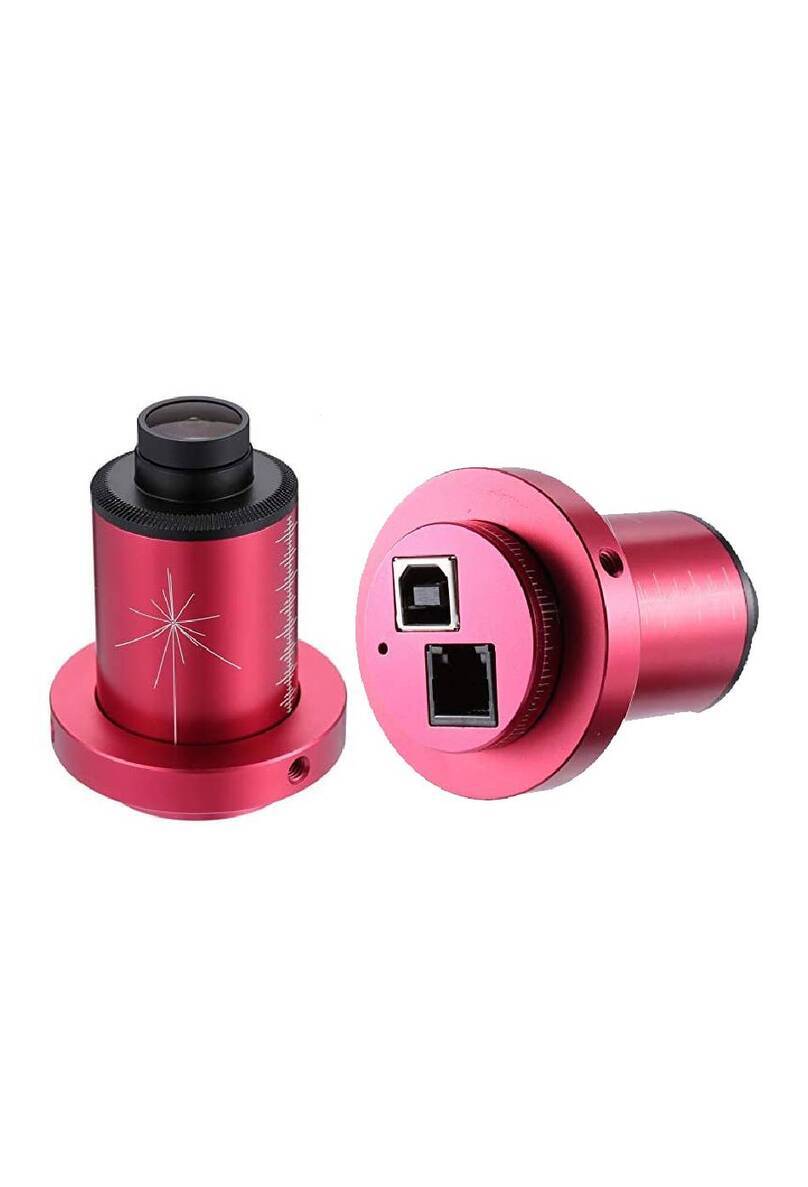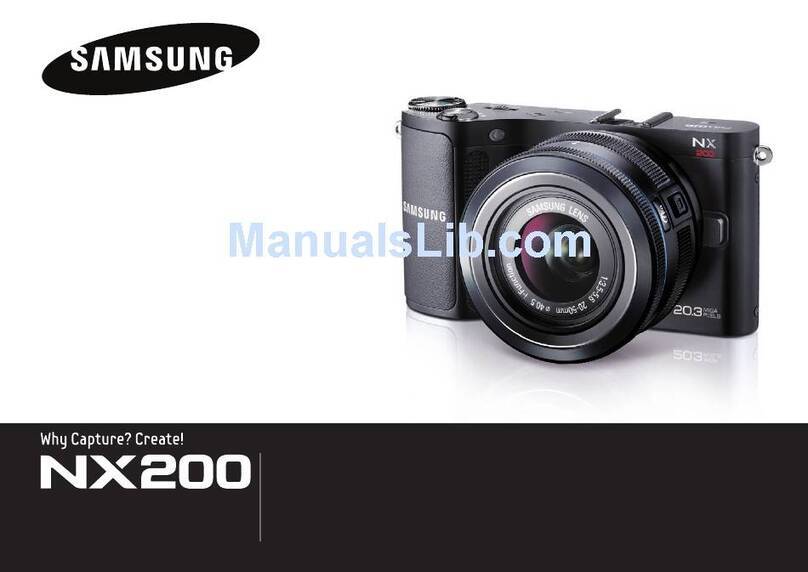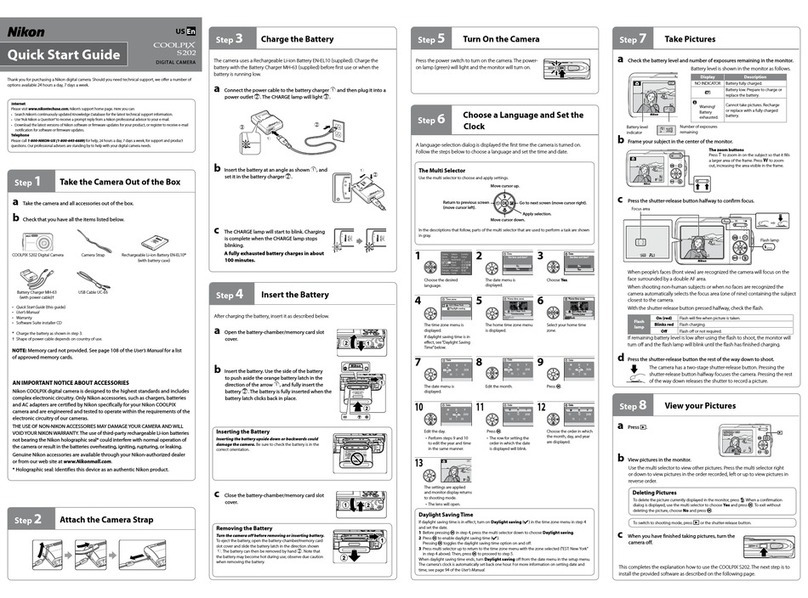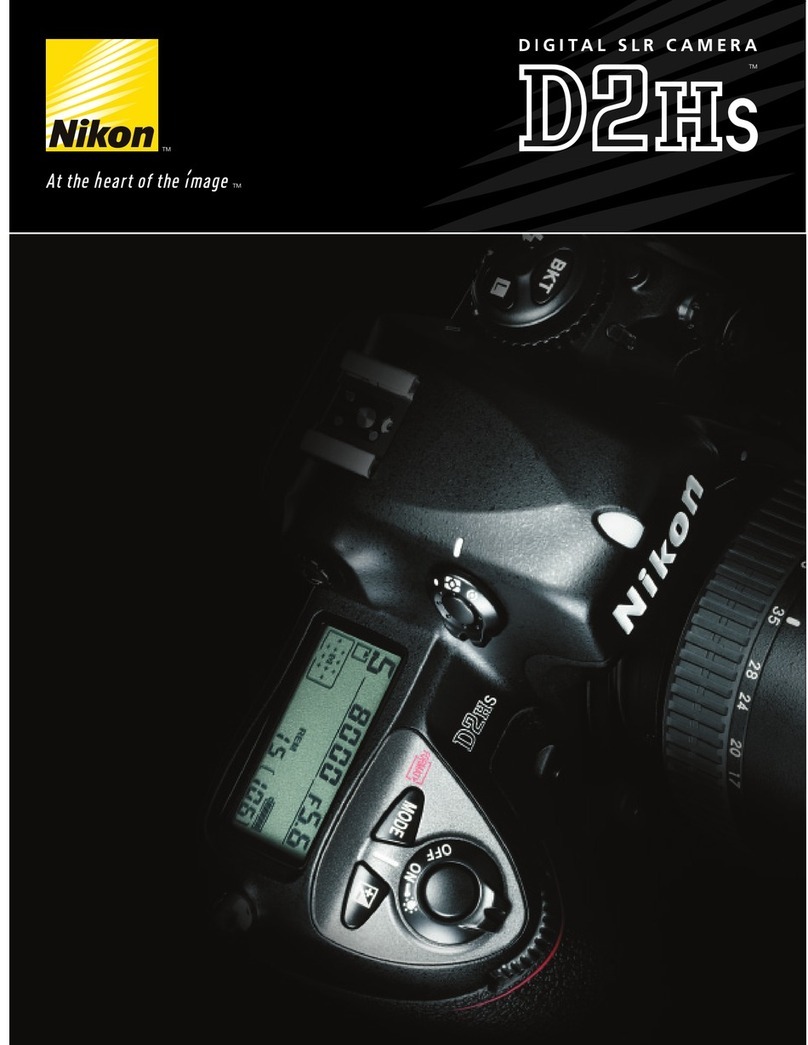Aqua-Vu 710 series User manual

Underwater Viewing System
Owners Manual
393-AV 360-760czManualEnglish1-2013.indd 1 8/23/13 1:58 PM

2 www.aquavu.com
Table of Contents
Become an Underwater Explorer ...............................................................................................................3
In Your Package............................................................................................................................................4
About Your Aqua-Vu System........................................................................................................................5
Product Safety ..............................................................................................................................................5
Connecting the Camera and Monitor.........................................................................................................5
Using the Ballast Weights and Stabilizing Fin ..........................................................................................6
When Ice Fishing.....................................................................................................................................6
When Open Water Fishing.......................................................................................................................6
Down-Viewing...............................................................................................................................................6
Powering the Your Aqua-Vu System............................................................................................................7
Charging the Battery...............................................................................................................................7
Battery Care.............................................................................................................................................7
Low vs Fully Charged...............................................................................................................................7
Over Charging ..........................................................................................................................................8
Under Charging........................................................................................................................................8
Fuse Protection........................................................................................................................................8
Replacing the Battery..................................................................................................................................8
Using the Aqua-Vu Controls ........................................................................................................................9
Viewing Images on the Monitor................................................................................................................10
Viewing Tips – On the Water.................................................................................................................10
Viewing Tips – On the Ice.....................................................................................................................10
Storing Your Underwater Viewing System ...............................................................................................11
Storing the Camera Cable.....................................................................................................................11
Storing the Camera................................................................................................................................11
Protecting the Monitor..........................................................................................................................11
Frequently Asked Questions .....................................................................................................................12
Troubleshooting..........................................................................................................................................13
Accessories .................................................................................................................................................14
12-volt 7-amp Battery............................................................................................................................14
Universal Battery Charger ....................................................................................................................14
Ice Pod....................................................................................................................................................15
Mo-Pod 3.................................................................................................................................................15
Warranty Information ................................................................................................................................15
One Year Limited Warranty...................................................................................................................15
How to Obtain Service ...............................................................................................................................15
393-AV 360-760czManualEnglish1-2013.indd 2 8/23/13 1:58 PM

Outdoors Insight Inc. 3
Become an Underwater Explorer
Congratulations! Your new Aqua-Vu Underwater Viewing System allows you to become
an aquatic explorer without getting wet! From a boat or pier, watch the underwater
world on your Aqua-Vu’s monitor as you swim the sh camera over the bottom landscape.
Or, with camera lowered through a hole in the ice, see how approaching sh react to your
bait!
However you employ your Aqua-Vu — as a serious shing tool on open-water or on
ice; for observing and learning about nature; for watching small children or pets; or for
security purposes — you will experience a fascinating new real-life view!
Temperature sensing
and display LED Lighting
Camera or
Black and
White / Color
camera
Internal 12-volt
battery with
easy charging
access
50 or 100 feet of cable
7” color
or black
and white
monitor
Flip-up
sunshield
Weatherproof
protective case
393-AV 360-760czManualEnglish1-2013.indd 3 8/23/13 1:58 PM

4 www.aquavu.com
In The Package
The following items come with your Underwater Viewing System.
Anti-spook fish camera with
Explorer lights and cable.
Padded protective
carry case
12-volt Power Cord with
Cigarette-Adapter
Battery Charger
Warranty Card Stop Card Manual
* AV360 has a 4 sided clear camera housing and does not include
additional weights or stabilizing fin.
Rechargeable
12-volt, battery
Bolts and nuts for
attaching ballast
weights and
stabilizer fin
Ballast weights (attach to
fish camera’s underside; for
weighting camera down while
viewing from a moving boat)
Plastic Stabilizer Fin that
attaches to fish camera’s tail
(keeps camera tracking straight
forward while viewing from a
moving boat; also doubles as
a “Downviewing” fin for vertical
viewing)
7” Color or B&W LCD monitor
393-AV 360-760czManualEnglish1-2013.indd 4 8/23/13 1:58 PM

Outdoors Insight Inc. 5
About Your Aqua-Vu System
This Aqua-Vu Underwater Viewing System features Outdoors Insight’s sh camera, a
camera that looks like a sh! This sh-friendly, horizontal-viewing camera reduces angler
concerns about “spooking.” And it features two LED lights to enhance the viewing of
bottom and sh in low-light conditions.
This Aqua-Vu is also user-friendly, with a 7-inch LCD monitor, convenient carrying
handle, and padded protective case.
Product Safety
Always keep camera cable away from ice augers, propellers, etc.
Keep the monitor and camera away from portable heaters, radiators or other heat
generating equipment.
Avoid wedging camera in rocks, roots, submerged trees, or underwater debris.
Do not store unit in damp places.
Do not attempt to disassemble the waterproof casing of the camera or monitor. This
voids the warranty.
Connecting the Camera and Monitor
Attach the camera cable to the monitor cable using the round 5 pin male and female
connectors. Secure the connection by turning the lock ring clockwise.
AV760CZ
Color 1/3” Sony HD
CCD Image Sensor
7” LCD Monitor
Water Temperature
Display
Camera Orientation
Display
Camera Depth Display
2x, 4x, 6x Zoom
100’ cable
AV755c
Color 1/3” Sony CCD
Image Sensor
7” LCD Monitor
Water Temperature
Display
Camera Orientation
Display
65’ cable
AV740c
Color 1/4” Sony CCD
Image Sensor
7” LCD Monitor
65’ cable
AV715c
Color CMOS Camera
7” LCD Monitor
50’ cable
AV710
7” LCD Monitor
B/W CMOS image
sensor
50’ cable
AV360
4 way selectable
camera
High intensity lighting
7” LCD monitor
60’ cable
Model Features:
393-AV 360-760czManualEnglish1-2013.indd 5 8/23/13 1:58 PM

6 www.aquavu.com
Using the Ballast Weights and Stabilizing Fin
When Aqua-Vu’ing while ice shing, or other stationary situations, such as shing from
docks, piers or anchored boats, additional weights are usually not necessary to reach
desired depths.
When Ice Fishing
Ballast weights and stabilizing n are often removed for ice shing and other vertical
applications. Stabilizing n, though, is often used by ice anglers for vertical, or “down”
viewing.
When Open Water Fishing
Most open-water viewing, however, is done while drifting or slow-trolling, or while
dealing with stream current. In these moving situations, the camera is best controlled
(held down to lessen “cable drag,” and kept forward-oriented) by attaching both the
ballast weights and stabilizing n (included) to the camera.
Attaching Ballast Weights. Line up holes in ballast weights with the predrilled holes in
forward n (on underside of your Fish-Cam camera). Bolt the weights to camera.
Attaching Stabilizing Fin. Slide plastic stabilizing n onto tail of camera. Line up
predrilled holes in ns with predrilled holes in stabilizing n. Bolt the stabilizing n to the
camera using the included hardware.
Down-Viewing
Simply insert the cable into the rear
slot on the stabilizing n; this causes the
camera lens to point down, or toward
bottom.
Insert cable into slot
in stabilizing fin.
Attach Fin using included HardwareAttach Ballast Weights using included
Hardware
393-AV 360-760czManualEnglish1-2013.indd 6 8/23/13 1:58 PM

Outdoors Insight Inc. 7
Powering the Aqua-Vu
ThisAqua-Vucomes with arechargeable12-volt, sealedandspill-proof batterydesigned
to t securely in the monitor base. There is no need to add water or electrolyte.
Charging the Battery
To charge the battery use the battery charger that came with your Aqua-Vu. Recharge
the battery by plugging the barrel connector, on the end of the charger, into the battery
charging port on the back of the monitor. Plug the charging unit into a 120 VAC power
source.
Note: The battery charger has an LED charge status indicator. With the charger
powered and attached to the
auxiliary power/charging port,
you will see either a red or
green LED lit.
Red indicates a drained
battery, or a drained battery
that is being charged.
Green indicates that the
battery is fully charged and
ready to use; disconnect the
battery from the charger.
Note 1: Whenever
replacing the battery be sure
to reconnect the battery
properly: RED (+) lead
to RED (+) terminal, and
BLACK (-) lead to BLACK (-)
terminal.
Note 2: Charge battery for 8 to 12-hours before rst use of the Aqua-Vu. Watch the
battery charger for charge indication LED (red = low battery power, green = 80 to 100%
battery power).
A fully charged battery can operate the Aqua-Vu continuously for up to 6 hours. For
longer viewing time the unit may be powered by a larger external 12-volt battery using
one of the following:
Power cord with cigarette adapter (included)
Power cord with alligator clips (purchased separately, see accessories)
Battery Care
Follow these simple rules for prolonged battery life and efcient use of your Aqua-Vu
Underwater Viewing System:
Fully charge the battery as soon as possible after purchase.
Recharging is recommended after every use. When not in use, recharge every six
months.
Store battery between 30 and 70 degrees F. Service life is shortened by temperatures
above 80°F and below 0°F.
Fasten battery securely in its compartment and minimize shock to the battery.
Charge battery according to proper procedures. Continuous overcharging or under-
charging is detrimental.
Low vs Fully Charged
The battery charger (included) will charge the battery from very low (10 volts) to
fully charged in about 24 hours. A voltmeter helps determine charge in the battery.
Immediately after charging, a voltmeter might read 14 volts or more. Peak performance
often occurs at 13 to 13.5volts. Without a voltmeter, a general rule is to charge the battery
Battery
charging
port
393-AV 360-760czManualEnglish1-2013.indd 7 8/23/13 1:58 PM

8 www.aquavu.com
for a minimum of 12 hours but no more than 24 hours.
Over Charging
The charger provided with this Aqua-Vu will not overcharge the battery in most cases.
Do not charge for more than 24 hours. If you do not use our recommended charger avoid
using a charging system with more than a 2-amp output. At too-high charging rates, a
battery progressively heats up and may be ruined in a few hours.
Under Charging
Batteries stored too long in discharged conditions accept current at far-below-
normal rates during charging. A battery may accept an increasing amount of current
until a normal level is reached. However, some discharged batteries never recover. And
discharged batteries that freeze may be permanently damaged.
Fuse Protection
The Aqua-Vu Camera system has a built in PPTC “Self Healing” fuse. The fuse will trip
if the battery is improperly connected. Once the the problem is corrected the fuse will
reset. The fuse is not user serviceable.
Replacing the Battery
To replace the battery:
1. Remove the screws that hold the battery cover in place.
2. Remove the cover and pull the power leads off the two battery terminals.
3. Turn the two battery tabs 90 degrees so they are no longer over the battery.
4. Remove the battery. This may require that you tilt the base until the battery slides
out.
Insert a new battery.
Turn the battery tabs over the battery. This holds the battery in place.
Connect the power leads to the two battery terminals, (red to positive, black to
negative).
Replace the battery cover and secure in place with screws.
3. Remove battery
terminals
2. Turn tabs off battery1. Remove screw from
battery cover
393-AV 360-760czManualEnglish1-2013.indd 8 8/23/13 1:58 PM

Outdoors Insight Inc. 9
Using the Aqua-Vu Controls
The Aqua-Vu has the following controls located below the monitor and on the base.
On/Off — The ON/OFF Power button turns
the monitor and camera On or Off. After
tuning on the Aqua-Vu, the screen may take
several seconds to appear. When On, you will
see the LED, above the button, illuminate.
Press and hold the power button until the
LED turns on/off.
Video Out — The “Video Out” jack is for
connecting your Aqua-View to a hand-held
camcorder, or to a larger external monitor.
Your Aqua-Vu will work with any camcorder
or any monitor that accepts the NTSC video
signal, and has a standard “Video-In” jack. Use any RCA-style patch cord that comes with
most camcorders (also available at most consumer electronics stores.) For external video
recording, plug one end of the cord into the “Video Out” jack on the Aqua-Vu; plug the
other end into the “Video-In” jack on your camcorder. You can now watch your Aqua-Vu
monitor and record at the same time.
Power – This jack allows you to plug in the 12-volt power cord with cigarette adapter
(included). Using this power cord provides a trickle charge to the battery and will power
the unit. The unit must have a functioning battery to operate. If the battery is completely
discharged, it will take a few minutes to re-charge the battery enough to power on the
unit.
Input allows you to plug in the battery charger for easy charging. NOTE: It is not
necessary to remove battery cover to recharge battery. Remove battery cover only when
replacing or servicing battery.
Monitor buttons will be backlit if ambient light is low. Auto on/off in approximately 4
seconds.
Camera
Light +/- to adjust
brightness
393-AV 360-760czManualEnglish1-2013.indd 9 8/23/13 1:58 PM

10 www.aquavu.com
Viewing Images
on the Monitor
If images are difcult to
see on the monitor you can
adjust your viewing angle or
the angle of the protective
sunshield. Loosen knobs and
adjust the monitor angle.
Viewing Tips –
On the Water
With the Aqua-Vu system
assembled, connected and
charged, begin viewing
simply by turning the unit on.
You will see a live picture of
whatever the camera “sees”
at a given moment.
Begin serious underwater
viewing by lowering the camera toward the bottom. The bottom provides a point of
reference that helps you perceive sizes of sh and objects below. Your viewing might be
vertical — studying bottom and sh straight below, as from a pier or an anchored boat. Or
you might desire a broader view of an area’s bottom features and sh distribution. When
viewing larger areas, anglers slowly move along in a boat, eyes glued to the monitor’s
ever-changing picture of what the camera sees underwater.
In most waters, sh relate to bottom structure. So, while drifting or slow-trolling, you’ll
need to guide the camera over the ups and downs of bottom contours. You will quickly
learn how to “swim” the camera over bottom terrain. With cable in hand, simply raise or
lower the camera, paying out more or less cable, depending on depth and boat speed.
As you move along, you should see on your monitor screen a continuous picture of the
passing bottom and the sh-holding watery zone just above it.
When viewing over soft bottom, make sure the camera is actually above the bottom
and not plowing or “stirring up” the muck. If the camera is digging into bottom, you’ll
only see a dark screen. Remember, if you can’t see bottom, raise or lower the camera to
“look” for it. If your camera becomes snagged, maneuver the boat so the direction of pull
is the reverse of what it was when the camera became snagged. A little jiggling or light
tugging will usually enable you to back the camera out of a snag. Avoid pulling the camera
through heavy weed cover or thick brush.
With your Aqua-Vu, you will be fascinated and often surprised by the ever-changing
view of underwater scenery: rocks, weeds, other bottom features — and sh! (For more
advice and viewing tips see “Frequently Asked Questions.”)
Viewing Tips – On the Ice
Your Aqua-Vu Explorer is an invaluable ice shing tool — a giant leap beyond
mysterious ashes and unidentied “sh” on a depth nder. Aqua-Vu enables you to
actually “see” the real picture! Note these huge advantages:
View bottom structure and distinguishing features. Observe weed lines and weed
characteristics, sand versus muck, big rocks versus small rocks, and transitions
from one bottom type to another. That’s a big help in precisely locating your
shing holes and placing your ice shing house!
Sharpen your shing techniques — watch your bait and see how approaching sh react
to it. Learn what baits, lures, colors, and jigging actions attract sh and trigger
Rotate the circular knobs to
adjust the angle of the monitor
Monitor cover
flips up to form
sunshield.
393-AV 360-760czManualEnglish1-2013.indd 10 8/23/13 1:58 PM

Outdoors Insight Inc. 11
strikes.
Identify sh species and size. Viewing actual sh with an Aqua-Vu camera solves
mysteries about what depth nder signals really show. This real picture helps with
choices about shing technique. Knowing whether sh are present, or whether
your target species is present aids in deciding to stay or to leave a spot.
When testing a new shing location, you may bore two holes a few feet apart — one for
your shing line, the other for lowering your Aqua-Vu camera. You can also rig the camera
in a down-viewing position for shing and viewing in the same hole. Test-sh for a few
minutes in different places. It’s possible to choose or eliminate potential shing spots on
the basis of “seeing” or not seeing sh while moving around and prospecting.
Aqua-Vu’s ICE-POD is an adjustable tripod that sets over the camera hole, holds
camera cable, and is a handy accessory for easy adjustment of camera direction. Aqua-
Vu’s MO-POD 3 is a remote-controlled and motorized unit for convenient “no hands”
rotation of the camera. (Available from retailers or online at www.aquavu.com.) For ice-
shing, most camera users remove the open-water ballast weight and stabilizing n.
Storing the Aqua-Vu Underwater Viewing System
Storing the Camera Cable
To store the camera’s 50 or 100 foot cable wrap it around the shuttle base.
Protecting the Monitor
To protect the monitor screen, when transporting and storing, fold down the protective
shield.
393-AV 360-760czManualEnglish1-2013.indd 11 8/23/13 1:58 PM

12 www.aquavu.com
Frequently Asked Questions
Question Answer
How far can I see? Naturally, the clearer the water, the farther you
can see. As a general rule, in water the camera
can see twice as far as the human eye — meaning
that if you can see 3 feet down you will be able to
see approximately 6 feet in front of the camera.
But this is just a rule of thumb. Water bodies
vary in water clarity and other characteristics.
For anglers studying bottom structure, 2 feet
of visibility is sufcient for underwater viewing,
though in very clear water, it is possible to see up
to 30 feet or more.
When do I use the lights? The Aqua-Vu lights in your Aqua-Vu camera are
designed for use in low-light conditions. Turn
the lights on for enhanced visibility in low light
conditions.
How do I steer the camera? For viewing in the direction of travel, attach the
stabilizer n to the camera housing. Slowly troll
(less than 2 mph) or drift along the structure you
intend to view. With n attached, the camera
will face in the boat’s direction of travel. If you’re
facing and moving forward, so will the camera; it
will show you the underwater terrain in front of
you. The stabilizer n always keeps the camera
tracking straight, so long as you’re moving.
Can I splice the camera cable to
obtain more length? No. Attempting to splice in additional cable
violates the waterproof integrity of the camera
and cable. This will void your warranty.
How fast can I troll with my
camera? It depends on depth, and also on the length of
cable you have out, which determines water
resistance or “drag.” The deeper you go, with
more cable out, the more drag there will be.
That requires slower travel for good viewing.
Generally, for optimal viewing, we recommend
going less than 2 miles per hour. Remember, the
slower you go, the more detail you will see. Also,
the faster the bottom depth changes, the more
rapidly you will need to manipulate the Aqua-Vu
cable.
Can I use my Aqua-Vu in
saltwater? Yes. All Aqua-Vu cameras are saltwater-rated,
constructed with stainless steel hardware and
materials that are impervious to corrosion. We
recommend rinsing salt water off camera using
clean water and a soft cloth after every use.
Will my unit work in subfreezing
conditions? Aqua-Vu systems are designed to operate at
temperatures ranging from -10 to 120 degrees
F. Expect your battery life to decrease in cold
conditions.
393-AV 360-760czManualEnglish1-2013.indd 12 8/23/13 1:58 PM

Outdoors Insight Inc. 13
Question Answer
How wide is the camera’s angle-
of-view? Your camera lens has a viewing angle of 92
degrees. At 4-1/2 feet in front of the camera you
will be viewing an image approximately 6 feet
wide.
Can I connect my Aqua-Vu to a
larger monitor or to a hand-held
camcorder?
Yes. For use in a permanent sh house, in a large
boat with a built-in video system, or elsewhere,
your Aqua-Vu can be hooked up to a larger
external TV, VCR, or camcorder, provided it has a
VIDEO-IN jack.
Is Aqua-Vu legal? To our knowledge there are no restrictions that
regulate the use of Aqua-Vu underwater viewing
systems.
Aqua-Vu is an approved pre-shing tool in
B.A.S.S. and for other tournament trails across
the country.
Troubleshooting
Problem Cause Solution
Nothing happens
(Screen fails to light
up) when the unit is
turned on.
Battery not connected. Properly connect the
battery: red to red,
black to black.
Battery not charged Attach battery charger
and charge battery for
12 - 24 hours.
The screen lights up
but I see no picture. Camera cable is disconnected. Plug the camera
connector into monitor
connector.
Camera cable or connectors
might be damaged. Check cable and
connectors for damage.
Consult the “How to
Obtain Service” section
in this manual.
I lowered the camera
to the bottom but
can’t see anything.
The camera may be buried in
muck! Raise the camera off the
bottom.
The water might be very murky. Turn the camera lights
On for enhanced
viewing in low-light
conditions.
393-AV 360-760czManualEnglish1-2013.indd 13 8/23/13 1:58 PM

14 www.aquavu.com
Problem Cause Solution
The camera seams
to work above water
but not below.
The camera is not orientated
correctly.
Try lowering camera until it
hovers just above bottom. You
should now be able to make
out the outline of the lake
bottom. Without the solid
reference point of the bottom,
the monitor may appear to
look blank.
The water clarity is poor. What you see on the
screen is directly
related to water
clarity. If the water
is dirty, visibility will
be limited. Again, try
to keep the camera
running a foot or less
above bottom.
There is a nick in the
camera cable. Cable may have gotten snagged
on a sharp surface. See the “How to Obtain
Service” section of this
manual for instructions
on replacing the
camera.
The image on the
screen has a dark
margin around it or
is blurry.
You’re seeing on-screen
symptoms of a weakening
battery.
Charge the battery,
install a charged
battery or connect to an
external battery.
Accessories
All of the following accessories can be order online at www.aquavu.com.
12-volt Battery
Additional power source for your Aqua-Vu.
12-Volt Battery
Battery Charger
The universal battery charger allows you to charge your 12 VDC
power supply.
Universal Battery
Charger
393-AV 360-760czManualEnglish1-2013.indd 14 8/23/13 1:58 PM

Outdoors Insight Inc. 15
Ice Pod
The Ice Pod is a camera positioning tripod for stabilizing and
rotating the camera while ice shing. The tripod allows you to
manually rotate the camera.
Ice Pod
Mo-Pod 3
The Mo-Pod3 is a remote control motorized camera
positioning tripod for stabilizing and rotating the camera
while ice shing. It can be controlled remotely using the
included hand-held remote.
Warranty Information
One Year Limited Warranty
Outdoors Insight, Inc. warrants this product to be free from defects in materials and
workmanship for one year from the date of purchase. This warranty applies to customers
who properly ll out and return the warranty card included with this manual. Failure to
complete and return the warranty card voids the warranty. Outdoors Insight, Inc. will, at its
sole discretion and without charging the customer, repair or replace any components that
fail in normal use. Failures due to abuse, misuse, or unauthorized alteration, modication
or repair are not covered. Cut camera cables and submerged monitors are not covered.
Broken cable and/or monitor connectors will incur a service repair charge. The warranty
is valid only for the original owner who purchases the unit from an authorized Aqua-Vu
dealer.
A two year extended warranty is available through Outdoors Insight, Inc. You may
purchase this warranty within 30 days of purchasing the unit by visiting www.aquavu.
com to print the form.
How to Obtain Service
We want our products to provide you with a pleasant on-the-water experience.
That means maximum customer satisfaction. If you have a problem with your Aqua-
Vu unit please contact the Outdoors Insight’s toll free number at (866) 755-6303 for a
Return Authorization Number (RA#). No service returns will be accepted without this
pre-return authorization number, which must be clearly marked on the outside of the
package. Outdoors Insight, Inc. retains the exclusive right to repair or replace the unit at
its discretion.
The customer is responsible for shipping costs associated with returning the unit to
Outdoors Insight, Inc. Outdoors Insight, Inc. will pay for shipping the repaired unit back
to the customer while it is still under one-year warranty. All out of warranty services will
be charged a fee for service and shipping which must be paid in advance. After obtaining
a Return Authorization number, the unit should be securely packed and shipped “pre-
paid freight” and insured to Outdoors Insight, Inc. It is the consumers’ full responsibility
to track their products sent out in the mail or other forms of delivery service. Outdoors
Insight Inc. will not be liable for lost packages sent out in the mail. Unless specied
otherwise, do not include battery or other accessories when returning the Aqua-Vu unit
393-AV 360-760czManualEnglish1-2013.indd 15 8/23/13 1:58 PM

16 www.aquavu.com
for repair. Outdoors Insight, Inc will not be responsible for lost or damaged accessories.
Please allow a minimum of 10 business days prior to calling on the status of your repair.
Outdoors Insight
34076 County Road 3
Crosslake, MN 56442
1-866-755-6303
RA#____________
Note: The RA number must be clearly marked on the outside of the package
Pour le texte en français du manuel de l’utilisateur, s.v.p., visitez le www.aquavu.com/support
393-AV 360-760czManualEnglish1-2013.indd 16 8/23/13 1:58 PM
This manual suits for next models
5
Table of contents
Other Aqua-Vu Digital Camera manuals
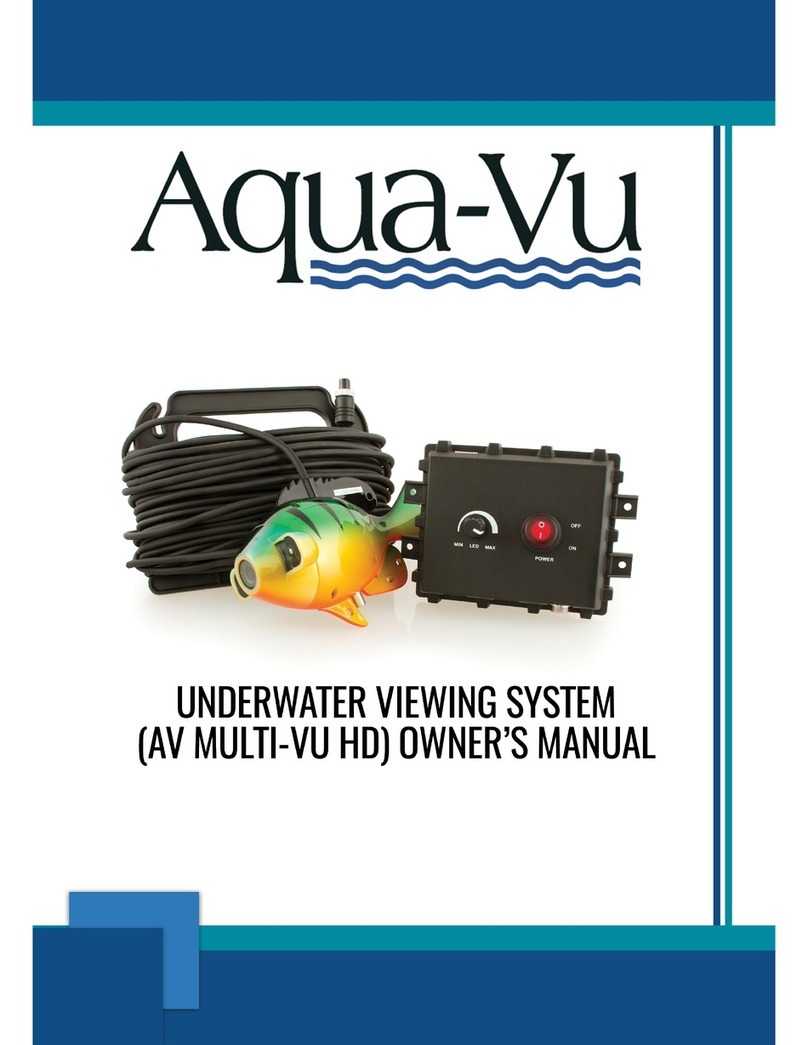
Aqua-Vu
Aqua-Vu AV Multi-Vu HD User manual
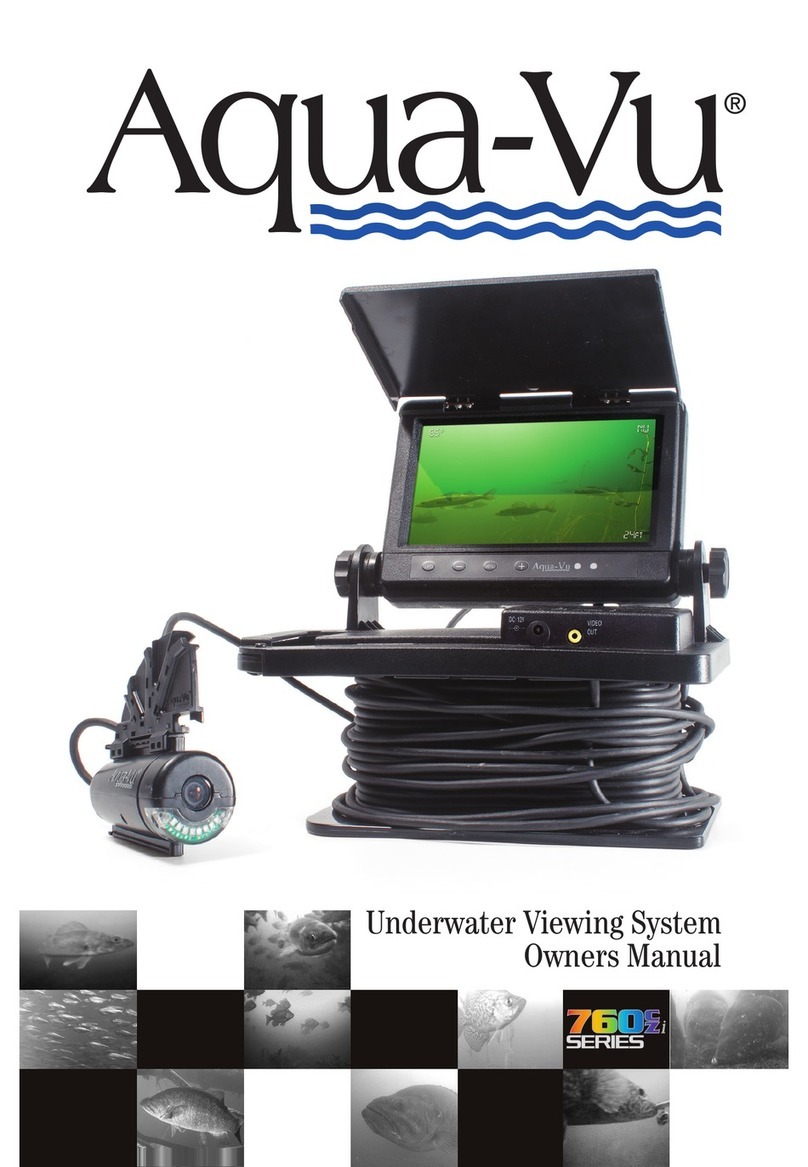
Aqua-Vu
Aqua-Vu AV715c User manual

Aqua-Vu
Aqua-Vu HD7i Pro User manual

Aqua-Vu
Aqua-Vu SCOUT XL-50 User manual
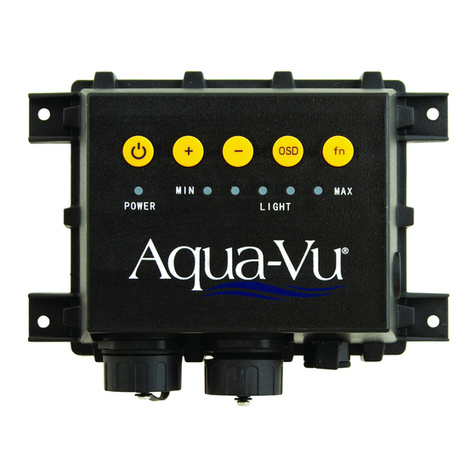
Aqua-Vu
Aqua-Vu MULTI-VU PRO User manual
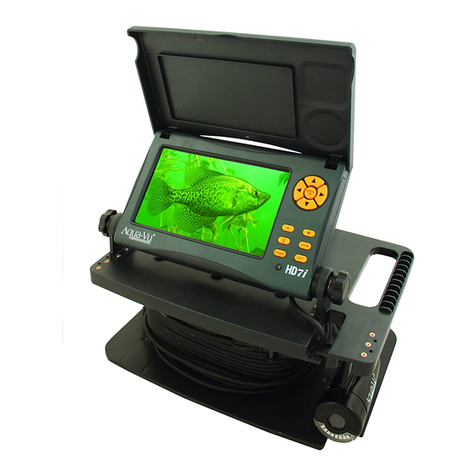
Aqua-Vu
Aqua-Vu HD7i User manual
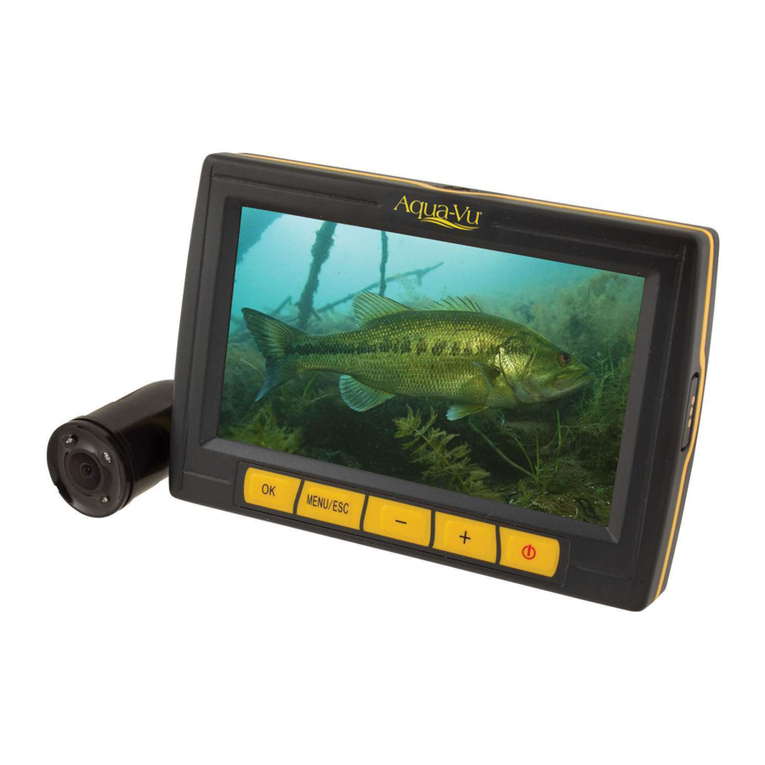
Aqua-Vu
Aqua-Vu micro Revolution 5.0 User manual
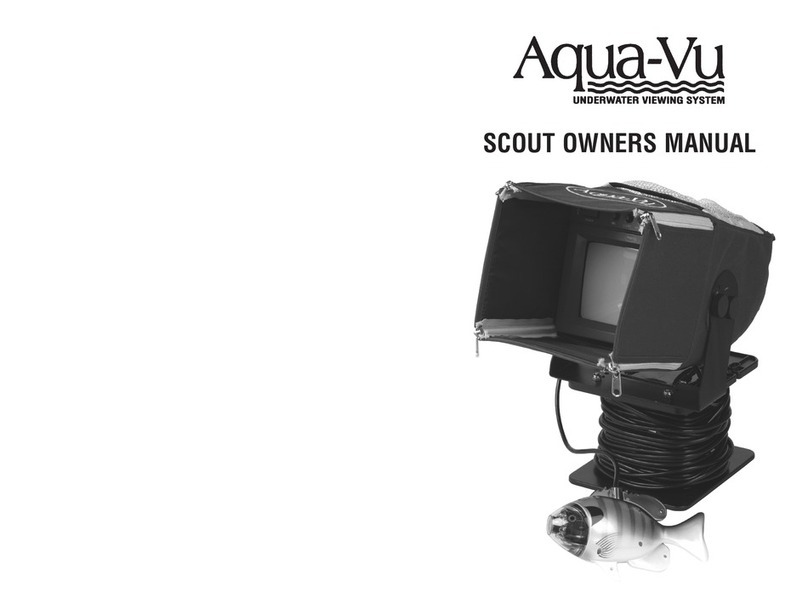
Aqua-Vu
Aqua-Vu Scout User manual

Aqua-Vu
Aqua-Vu HD7I User manual
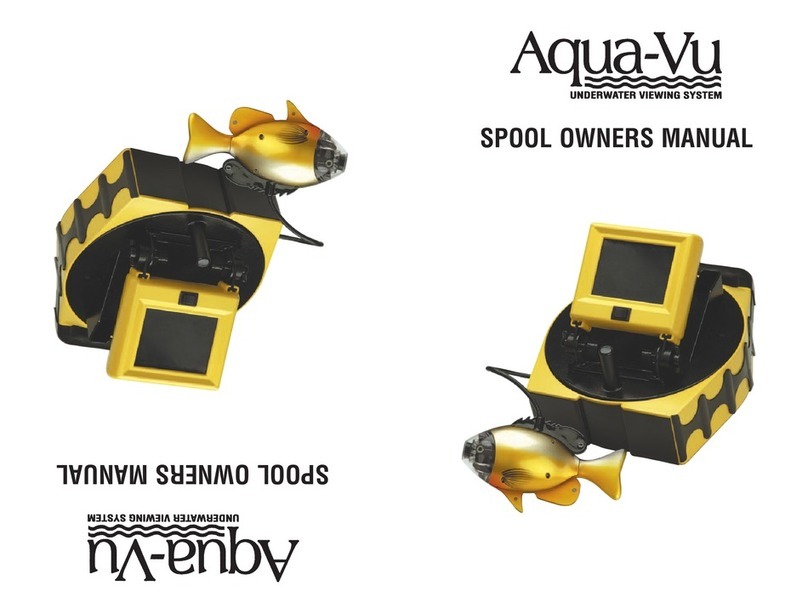
Aqua-Vu
Aqua-Vu SPOOL User manual
